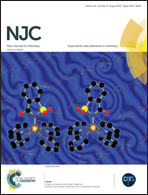Effects of dynamic vulcanization on the kinetics of isothermal crystallization in a miscible polymeric blend
Abstract
In this study, the kinetics of isothermal crystallization was used as a tool to investigate the effect of dynamic vulcanization on the phase separation of miscible blends of acrylic rubber (ACM) and poly(vinylidene fluoride) (PVDF). Morphology studies using scanning electron microscopy (SEM) clearly showed that crosslinking upon dynamic vulcanization induced nanoscale ACM droplets in the samples near the phase separation curve. Real-time Fourier transform infrared spectroscopy (FTIR) and differential scanning calorimetry (DSC) were used to study the skeletal change of the chains during the isothermal crystallization and the kinetics of the crystallization, respectively. The FTIR study demonstrated that PVDF crystallizes in the α form in blends and in dynamically vulcanized samples. Avrami analysis showed that the n values of dynamically vulcanized samples are larger than those of the corresponding unvulcanized blends. The crystallization kinetics, evaluated using the Lauritzen–Hoffman theory, proves that increasing the free energy of folding (σe) upon blending of ACM with PVDF during dynamic vulcanization reduces this parameter. Free energy of folding studies confirms the SEM results, demonstrating the phase separation upon dynamic vulcanization in this blend.


 Please wait while we load your content...
Please wait while we load your content...